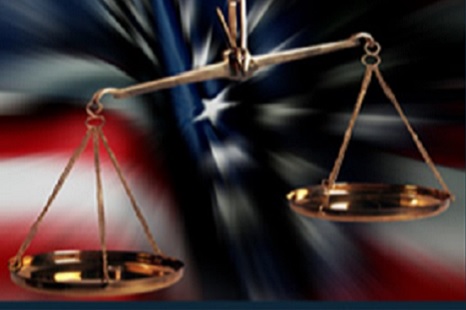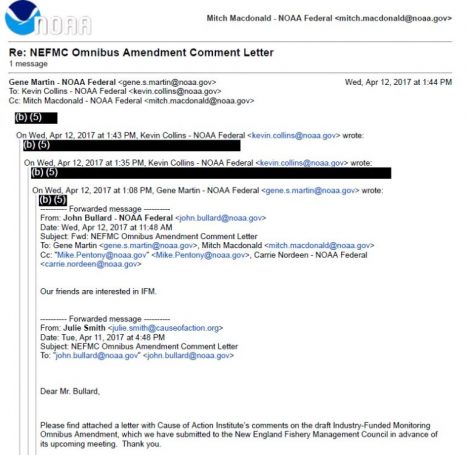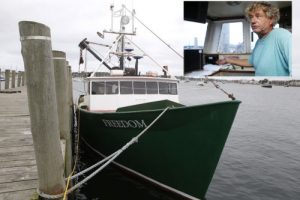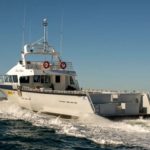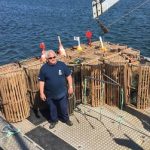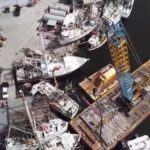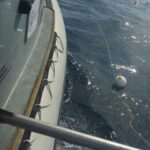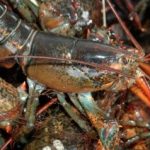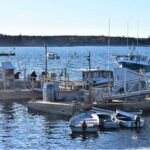Tag Archives: At-Sea Monitoring
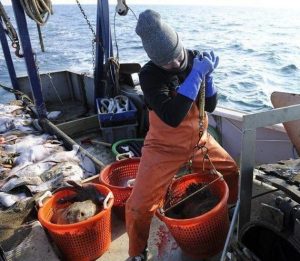
Federal government to increase at-sea monitoring to 100%.
At-sea monitors are workers who collect data on board commercial fishing boats to help inform regulations and management of species. The government approved the new, higher percentage of trip cover on Tuesday, said Michael Pentony, regional administrator with NOAA’s Greater Atlantic Regional Fisheries Office in Gloucester. The rules apply to valuable species that are harvested in the Northeast such as cod, haddock and flounder. Pentony said the new rules will replace the old process of calculating a target for the level of monitoring coverage every year. The coverage target will instead be 100% for four years as long as federal funding can support agency and industry costs, he wrote in a letter to fishery managers. >click to read< 16:24
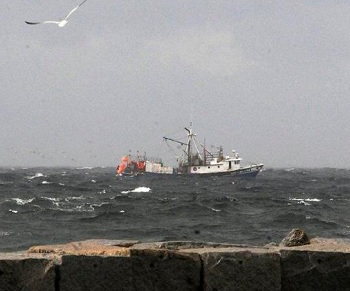
NEFMC votes to set a future target of 100% monitoring coverage on sector based groundfish vessels
The council, deliberating online via webinar on Amendment 23, overwhelmingly approved the motion for its preferred alternative of 100% coverage level for sector vessels in the Northeast Multispecies groundfish fishery. But the motion, crafted through a morning and afternoon of rulemaking on the fly, included a valuable caveat for fishermen: The region’s commercial groundfish harvesters likely won’t have to pay the full costs for the monitoring for the first four years the amendment is in effect or as long as supporting federal funds last. According to the approved measure, the commercial fishing industry will receive federal reimbursements, or money from other federal mechanisms, for 100% of their electronic monitoring costs and 100% of their at-sea monitoring costs in the first four fishing years the amendment is in effect. >click to read< 07:41

NE Groundfish Fishery in Hail Mary mode – Monitor vote could be death knell for fleet
A quick recap: The council has been working on Amendment 23 for more than two years. It seems like 50. The amendment will set future monitoring levels for sector-based groundfish vessels. The council faces four alternatives: Monitors aboard 25%, 50%, 75% or 100% of groundfish trips. The council has chosen 100% coverage as its preferred alternative. That’s not good for the groundfishermen. Once the federal government stops harvesting spare change from between the sofa cushions to keep reimbursing the fleet for at-sea monitoring, the onus for paying falls on the fishermen at a current tune of about $700 per day per vessel. >click to read< Online access to the meeting is available by >clicking this link< 10:24
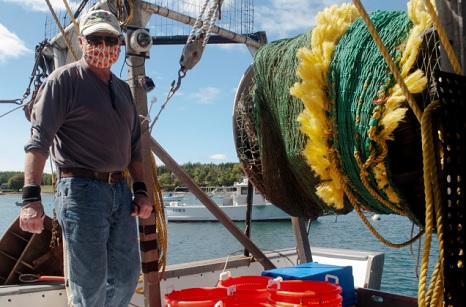
NEFMC will vote Sept. 30 on changing requirements for groundfish monitoring, fishermen have mixed responses
Commercial fisherman Randy Cushman walks on top of his boat where he measures fish in front of electronic monitoring cameras, pictured to the right. Cushman is among a handful of New England fishermen who use electronic monitoring instead of a traditional human observer to track what they catch and discard. The New England Fisheries Management Council (NEFMC) is scheduled to vote on changes to its groundfish management plan at a virtual meeting Sept. 30, culminating four years of research. “If we’re going to have accurate stock assessments, we need 100 percent coverage under this management system,” said Cushman. But, the prospect of increased monitoring concerns Terry Alexander, a fisherman who represents Maine on the NEFMC and operates his 62-foot boat out of Massachusetts. >click to read< 10:57

Fishermen, state leaders push back against at-sea monitoring proposal
The New England Fisheries Management Council (NEFMC) is considering Amendment 23 to the Northeast Multispecies Fishery Management Plan (FMP) that would require groundfishing vessels to implement 100% at-sea monitoring or a blended approach of at-sea monitoring and electronic monitoring. The proposed change seeks to improve catch accountability in the fishery, but fishermen argue this particular proposal is overly burdensome and unnecessary to achieve the stated goal,,, Overall, fishermen across Massachusetts fear this proposed policy would incur overly burdensome costs on an already struggling fleet, accelerating the expiration date of the fishery.” >click to read< 11:52
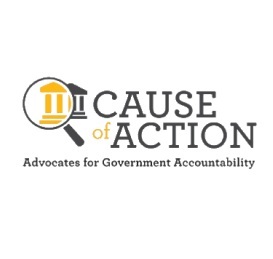
Family Fishermen Move to Block Industry-Killing At-Sea Monitoring Rule
Cause of Action Institute (CoA Institute) today filed a motion for summary judgement on behalf of a group of New Jersey fishermen, asking a D.C. Federal Court to vacate job-killing fisheries regulations called the “Omnibus Amendment.” CoA Institute filed suit in February to challenge the industry-killing rule, which requires certain boats in the Atlantic herring fishery to carry “at-sea monitors” at their own cost. The Omnibus Amendment—designed by the New England Fishery Management Council (NEFMC) and finalized by the National Oceanic and Atmospheric Administration and the Department of Commerce—is expected to cost fishermen upwards of $700 a day, leading to a projected 20% drop in returns-to-owner (profit). Not only is this industry already overregulated, but the agencies are forcing this unlawful rule upon fisherman without any statutory authority to do so. >click to read< 15:25
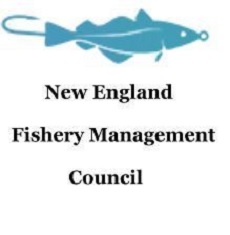
Council delays vote on at-sea monitoring
Meeting solely via webinar, council members voted 12-5 to postpone final action on Amendment 23 beyond its June meeting, when it expected initially to vote. The amendment will set at-sea monitoring levels in the Northeast Multispecies groundfish fishery. Many of those voting for the postponement expressed concern that fishermen have enough on their plate managing the economic and social impacts of the pandemic without having to deal with the complexities of the amendment and the need to develop public comment. “My day job is working with commercial groundfishermen and I can assure all of you, when I’m on the phone with them, it’s COVID-19 related, not Amendment 23-related,” said council member Libby Etrie. >click to read< 16:10

Family Fishermen Challenge Illegal, Industry-Killing At-Sea Monitoring Rule from Department of Commerce
Cause of Action Institute (“CoA Institute”) today filed a lawsuit on behalf of a group of New Jersey family fishermen to block a new regulation that would force them to pay for third-party “at-sea monitors.” The industry-killing rule—which was designed by the New England Fishery Management Council and promulgated by the National Oceanic and Atmospheric Administration and U.S. Department of Commerce—will require certain boats in the Atlantic herring fishery to carry “at-sea monitors” and at their own cost. >click to read< 14:40
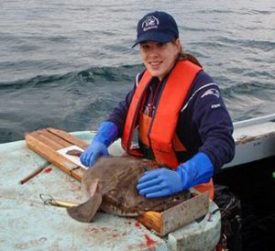
At-Sea Monitoring 2019 Coverage Levels and Reimbursement for Groundfish Sector Fishery
NOAA Fisheries announces that for fishing year 2019 the total target at-sea monitoring coverage level is 31 percent of all groundfish sector trips. Additionally, for fishing year 2019, NOAA Fisheries will continue to reimburse 100 percent of industry’s at-sea monitoring costs. In 2018 and 2019, we received Congressional appropriations that have been and will continue to be used to reimburse sectors for 100 percent of their ASM costs. This reimbursement will continue at 100 percent for the 2019 fishing year. As in past years, the Atlantic States Marine Fisheries Commission will administer the reimbursement. For more information, >click to read<15:44
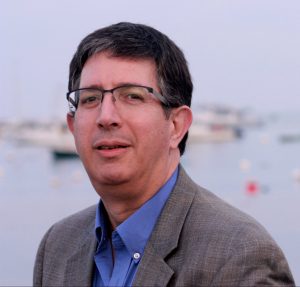
Government Officials Ignore Public Comment, Create New Financial Burden on Fisherman
In a letter acquired by Cause of Action Institute (CoA Institute), it appears that the National Oceanic and Atmospheric Administration (NOAA) and the U.S. Department of Commerce have approved a controversial fishery management proposal while ignoring public comments critical of the plan. This approval also seems to have been issued before the close of a second public comment period for implementing regulations. The NOAA rulemaking is expected to seriously impact commercial fishing on the Eastern seaboard by applying costly new burdens on fishermen. >click to read<19:23
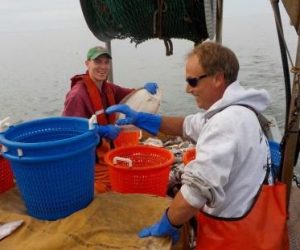
A rare victory for New England commercial fishermen
The New England fishing industry is enjoying a rare victory over federal regulators as the National Oceanic and Atmospheric Administration announced earlier this week that it would pick up the cost of at-sea monitoring of boats this year. What’s more, NOAA will reimburse fishermen for some of their out-of-pocket expenses from 2017. While that’s good news, there is still work to be done. There is no guarantee the new policy — less a promise of change than a one-time concession tucked in the federal budget — will continue past this year. And beyond the cost, the expensive, inefficient at-sea monitoring program, which spreads a limited number of monitors among a large number of vessels for an undetermined number of trips, must be able to provide accurate information regulators and fishermen can trust. >click to read<07:34

Dear Senator Warren
Dear Senator Warren , As a retired commercial fisherman, and your constituent, I am trying to help those fishermen that still exist. I want to out line our problems, as I see them. A. The science used by NOAA decides our future. Under the current law NOAA does not have to compare or look at other scientific data. They “own” the term “best available science” exclusively, excluding better data collected by non government entities, including collaborative science between industry and academia! This is wrong. This needs to be changed, and the only way is to have some wording in The Magnusson Act to that effect. By supporting HR-200, you can right this wrong. B. Saltonstall-Kennedy Act,,, >click to read<18:57

Fishermen hope for long-term solution to At-Sea Monitoring costs
The federal budget bill approved last month includes millions of dollars to pay for workers who are required to join fishing trips off New England’s shores. But it’s a temporary fix. And for the few groundfishermen left, the cost could be too much to take on themselves. David Goethel has been groundfishing off Hampton’s coast for 51 years and says a lot has changed. “We’ve lost in New Hampshire about 95 percent of our active fishermen in the last 17 years,”,, >click to read<11:24
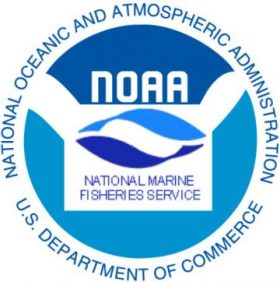
NOAA Announces At-Sea Monitoring 2018 Coverage Levels for Groundfish Sector Fishery
NOAA Fisheries announces that for fishing year 2018 the total target at-sea monitoring coverage level is 15 percent of all groundfish sector trips. This target coverage level is a one percentage point decrease from the 2016 coverage level, which was 16 percent. As the target coverage level is set based on an average of at-sea monitoring data from the past three full groundfish fishing years, this level is set based on data from the 2014-2016 fishing years. >click here to read< 14:45
Fisherman David Goethel: Justices ruled on technicalities, not merits
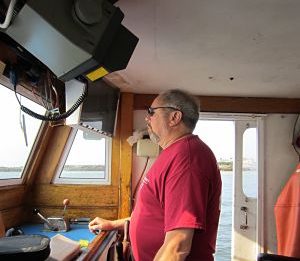 The rejection by the Supreme Court is the third defeat suffered by Goethel and co-plaintiff South Dartmouth-based Northeast Fishing Sector XIII since they first sued NOAA Fisheries and other federal officials in December 2015 in U.S. District Court in New Hampshire.,,, “The Supreme Court was our last judicial hope to save the centuries-old New England industry,” Goethel said in a statement. Later, in an interview, Goethel let loose against what he said is the “stacked deck” of standing up to regulators, as well as his frustration with the justice system. click here to read the story 20:56
The rejection by the Supreme Court is the third defeat suffered by Goethel and co-plaintiff South Dartmouth-based Northeast Fishing Sector XIII since they first sued NOAA Fisheries and other federal officials in December 2015 in U.S. District Court in New Hampshire.,,, “The Supreme Court was our last judicial hope to save the centuries-old New England industry,” Goethel said in a statement. Later, in an interview, Goethel let loose against what he said is the “stacked deck” of standing up to regulators, as well as his frustration with the justice system. click here to read the story 20:56
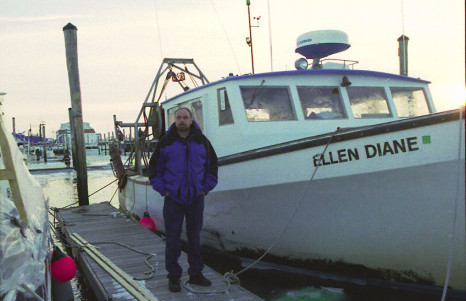
New Hampshire fleet dwindles as at-sea monitoring decision heads to Supreme Court
A New Hampshire fisherman leading the fight against a decision by the National Oceanic and Atmospheric Association to shift the cost of at-sea monitoring to industry has appealed the case to the U.S. Supreme Court. David Goethel of Hampton, New Hampshire, said he filed the appeal in early July. He is challenging the decision of a federal district court and the 1st U.S. Circuit Court of Appeals, which ruled in NOAA’s favor, according to the Associated Press. Goethal, who filed his original suit in December 2015, has been joined in his appeal by the Northeast Fishery Sector 13, which represents fishermen from Massachusetts to North Carolina. His legal support is being provided pro bono by the Cause for Action Institute.,, In Goethel’s appeal to the Supreme Court, he argues that NOAA’s requirement of at-sea monitors represents an illegal, warrantless search of private property, and that forcing the industry to pay for its own monitoring represents a violation of the Constitution’s Commerce Clause. click here to read the story 10:51
NOAA Fisheries Announces Reimbursement Rate of 60 Percent for 2017 At-Sea Monitoring Costs in Groundfish Fishery
 Effective at-sea monitoring (ASM) programs are essential to the success and sustainability of Greater Atlantic Region fisheries. Groundfish vessels in the Greater Atlantic Region that participate in the sector program are required to carry a fisheries observer or an at-sea monitor for a portion of their trips. Fisheries observers are provided and typically paid for by the Federal government in the Standardized Bycatch Reporting Methodology (SBRM) program and at-sea monitors are partially paid for by industry in the at-sea monitoring program. In 2016, industry began paying their portion of at-sea monitoring costs and NOAA Fisheries was able to reimburse 85 percent of industry’s expenses for July 2016-April 2017. Read the press release here 13:01
Effective at-sea monitoring (ASM) programs are essential to the success and sustainability of Greater Atlantic Region fisheries. Groundfish vessels in the Greater Atlantic Region that participate in the sector program are required to carry a fisheries observer or an at-sea monitor for a portion of their trips. Fisheries observers are provided and typically paid for by the Federal government in the Standardized Bycatch Reporting Methodology (SBRM) program and at-sea monitors are partially paid for by industry in the at-sea monitoring program. In 2016, industry began paying their portion of at-sea monitoring costs and NOAA Fisheries was able to reimburse 85 percent of industry’s expenses for July 2016-April 2017. Read the press release here 13:01

Fishermen shot down in fishing monitor dispute.
A federal appeals court has found in favor of the U.S. government in a challenge brought by a New England fishermen’s group over the cost of at-sea monitoring. The monitors are workers who collect data that help the government craft fishing regulations. The government shifted the cost of paying for monitors to fishermen last year. A group led by New Hampshire fisherman David Goethel sued the government over the rule change. Read the rest here 20:47
GARFO: At-Sea Monitoring 2017 Coverage Levels for Groundfish Sector Fishery
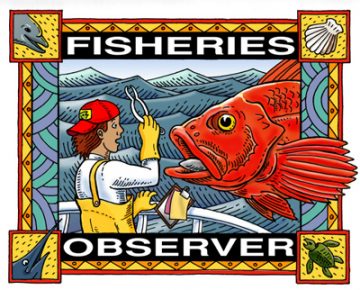 NOAA Fisheries announces that for fishing year 2017 the total target at-sea monitoring coverage level is 16 percent of all groundfish sector trips. This target coverage level is a 2 percentage point increase from the 2016 coverage level (14 percent). As the target coverage level is set based on an average of at-sea monitoring data from the past 3 full groundfish fishing years, this level is set based on data from the 2013-2015 fishing years. Federally funded observer coverage provided by the Northeast Fishery Observer Program to meet the Standardized Bycatch Reporting Methodology (SBRM) requirements will partially satisfy the 16 percent coverage requirement. Sectors will therefore actually pay for at-sea monitoring coverage on less than 16 percent of their groundfish trips, but the total will depend on the SBRM coverage rates, which are not yet out. Read the press release here, For more information, please read the Summary of Analysis Conducted to Determine At-Sea Monitoring Requirements for Multispecies Sectors FY2017 13:59
NOAA Fisheries announces that for fishing year 2017 the total target at-sea monitoring coverage level is 16 percent of all groundfish sector trips. This target coverage level is a 2 percentage point increase from the 2016 coverage level (14 percent). As the target coverage level is set based on an average of at-sea monitoring data from the past 3 full groundfish fishing years, this level is set based on data from the 2013-2015 fishing years. Federally funded observer coverage provided by the Northeast Fishery Observer Program to meet the Standardized Bycatch Reporting Methodology (SBRM) requirements will partially satisfy the 16 percent coverage requirement. Sectors will therefore actually pay for at-sea monitoring coverage on less than 16 percent of their groundfish trips, but the total will depend on the SBRM coverage rates, which are not yet out. Read the press release here, For more information, please read the Summary of Analysis Conducted to Determine At-Sea Monitoring Requirements for Multispecies Sectors FY2017 13:59
Longtime Gloucester Fisherman Sam Parisi discusses regulatory issues he wants you to know about
 My name is Sam Parisi I am a proud third generation Fisherman from Gloucester, Massachusetts. My involvement in the fishing industry spans well over fifty years, and sadly, I have never seen our fleet, our shore side infrastructure in Gloucester, and New England in the alarming position it is at this moment. This is the result of unacceptable mismanagement of our fishery at the hands of the NOAA/NMFS bureaucracy, which is expanding. Another troubling issue is the at-sea monitoring program. The S-K funds, and S. 3087 “American Fisheries Advisory Committee Act”, introduced by Senator Dan Sullivan, R-AK, is also discussed. Read the rest here 15:39
My name is Sam Parisi I am a proud third generation Fisherman from Gloucester, Massachusetts. My involvement in the fishing industry spans well over fifty years, and sadly, I have never seen our fleet, our shore side infrastructure in Gloucester, and New England in the alarming position it is at this moment. This is the result of unacceptable mismanagement of our fishery at the hands of the NOAA/NMFS bureaucracy, which is expanding. Another troubling issue is the at-sea monitoring program. The S-K funds, and S. 3087 “American Fisheries Advisory Committee Act”, introduced by Senator Dan Sullivan, R-AK, is also discussed. Read the rest here 15:39
This timely NOAA announcement just showed up! New “pre-proposal” process provides more guidance for Saltonstall-Kennedy grant applicants Click here 15:59
NOAA to reimburse fishermen 85 percent for 2016 at-sea monitoring costs
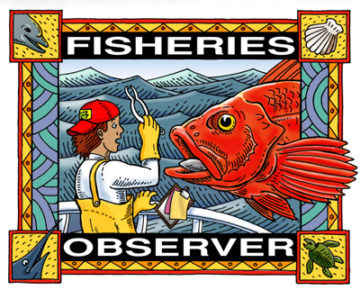 The National Oceanic and Atmospheric Administration will reimburse New England fishermen for 85 percent of the cost of at-sea monitors in 2016, U.S. Sen. Jeanne Shaheen’s office announced Wednesday. NOAA is expected to launch a program July 1 through the Atlantic States Marine Fisheries Commission where fishermen will be reimbursed for costs they pay this year to the at-sea monitors. Fishermen have said the costs, which began this year, are too much for them to pay and could sink their already weakened industry. NOAA is paying for the reimbursement program through extra funds left over from the 2015 fiscal year and does not intend to cover costs for at-sea monitors in 2017. Read the rest here 21:44
The National Oceanic and Atmospheric Administration will reimburse New England fishermen for 85 percent of the cost of at-sea monitors in 2016, U.S. Sen. Jeanne Shaheen’s office announced Wednesday. NOAA is expected to launch a program July 1 through the Atlantic States Marine Fisheries Commission where fishermen will be reimbursed for costs they pay this year to the at-sea monitors. Fishermen have said the costs, which began this year, are too much for them to pay and could sink their already weakened industry. NOAA is paying for the reimbursement program through extra funds left over from the 2015 fiscal year and does not intend to cover costs for at-sea monitors in 2017. Read the rest here 21:44
New England fishermen get a break on monitoring costs
 Commercial groundfishermen had their projected cost for at-sea monitoring cut in half this year, but fishermen say it is still unfair they’re forced to pay for policing of their own work. NOAA lightened the fishermen’s burden because data shows the federal agency can obtain adequate information on fish populations with less monitoring coverage than initially determined. Fishermen have said it is unconstitutional for NOAA to force them to pay for their own policing. Hampton fisherman David Goethel said NOAA’s reduction in coverage is not enough to satisfy fishermen. “It’s obviously an improvement,” Goethel said, “But it still doesn’t alleviate the big problem, which is we shouldn’t be paying at all.” Read the rest here 08:15
Commercial groundfishermen had their projected cost for at-sea monitoring cut in half this year, but fishermen say it is still unfair they’re forced to pay for policing of their own work. NOAA lightened the fishermen’s burden because data shows the federal agency can obtain adequate information on fish populations with less monitoring coverage than initially determined. Fishermen have said it is unconstitutional for NOAA to force them to pay for their own policing. Hampton fisherman David Goethel said NOAA’s reduction in coverage is not enough to satisfy fishermen. “It’s obviously an improvement,” Goethel said, “But it still doesn’t alleviate the big problem, which is we shouldn’t be paying at all.” Read the rest here 08:15
Monitor costs shift to fishermen Tuesday, fall out from Carlos Seafood, and EDF opportunists.
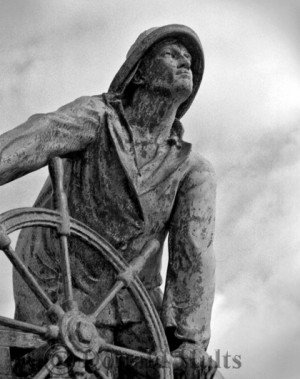 Cape Ann lawmakers Bruce Tarr and Ann-Margaret Ferrante walked a thin line last week when they sat down and penned a letter to state Attorney General Maura Healey on the issue of at-sea monitoring. While the fishermen’s lawsuit has drawn the most attention, there is another that could prove equally as troubling to NOAA and the fishing industry: maritime environmental group Oceana’s lawsuit challenging NOAA Fisheries’ bycatch rule. The issue of monitoring burst back into the public arena on Friday, when federal agents — including those from NOAA Law Enforcement and the Internal Revenue Service — raided the operations of Carlos Seafood,,, The arrests prompted a quick response from environmental groups seeking expanded monitor coverage for the groundfish fishery. Read the rest here 07:22
Cape Ann lawmakers Bruce Tarr and Ann-Margaret Ferrante walked a thin line last week when they sat down and penned a letter to state Attorney General Maura Healey on the issue of at-sea monitoring. While the fishermen’s lawsuit has drawn the most attention, there is another that could prove equally as troubling to NOAA and the fishing industry: maritime environmental group Oceana’s lawsuit challenging NOAA Fisheries’ bycatch rule. The issue of monitoring burst back into the public arena on Friday, when federal agents — including those from NOAA Law Enforcement and the Internal Revenue Service — raided the operations of Carlos Seafood,,, The arrests prompted a quick response from environmental groups seeking expanded monitor coverage for the groundfish fishery. Read the rest here 07:22
NOAA At-sea monitoring suspended (for now) – To start again March 1, when boats must pay costs
 NOAA Fisheries exhausted its budgeted money for at-sea monitoring of Northeast fishing sector groundfish boats on Feb. 16 and has suspended all required monitoring until the fishing industry assumes monitoring costs on March 1. The details of the suspension, which has not been publicly announced by NOAA, were contained in a Feb. 19 declaration filed by NOAA Regional Administrator John K. Bullard in the federal lawsuit New Hampshire fisherman David Goethel of Hampton filed against the National Oceanic and Atmospheric Administration, the Department of Commerce and officials within those federal agencies. “On or about Feb. 16, the (Northeast Fisheries) Science Center became aware for the first time that recent updates did not include information for all completed trips … and that committed government funds to pay for ASMs had been exhausted,” Bullard wrote in his declaration. Read the rest here 08:06
NOAA Fisheries exhausted its budgeted money for at-sea monitoring of Northeast fishing sector groundfish boats on Feb. 16 and has suspended all required monitoring until the fishing industry assumes monitoring costs on March 1. The details of the suspension, which has not been publicly announced by NOAA, were contained in a Feb. 19 declaration filed by NOAA Regional Administrator John K. Bullard in the federal lawsuit New Hampshire fisherman David Goethel of Hampton filed against the National Oceanic and Atmospheric Administration, the Department of Commerce and officials within those federal agencies. “On or about Feb. 16, the (Northeast Fisheries) Science Center became aware for the first time that recent updates did not include information for all completed trips … and that committed government funds to pay for ASMs had been exhausted,” Bullard wrote in his declaration. Read the rest here 08:06
SouthCoast sector managers detail fishing costs
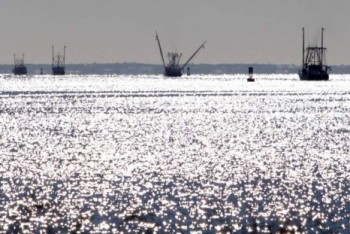 Managers of area fishery sectors on Friday said many local groundfish boats could face daily charges of $125 or less-frequent charges of about $500, to pay for government-mandated monitoring of their catches. Sector 9 manager Stephanie Rafael-DeMello and Sector 13 manager John Haran both said they negotiated with East West Technical Services, which has an office in Narragansett, R.I., for catch-monitoring services for which fishermen expect to begin paying around March 1. Rafael-DeMello said the negotiated price was “just under $500 a day,” per boat. But because regulators randomly select boats for monitoring, she said, Sector 9 will spread the cost evenly, charging boats a flat rate of $125 per sea day in order to foot the overall costs of monitoring, which will apply only to about 20 percent of trips. Read the article here 08:49
Managers of area fishery sectors on Friday said many local groundfish boats could face daily charges of $125 or less-frequent charges of about $500, to pay for government-mandated monitoring of their catches. Sector 9 manager Stephanie Rafael-DeMello and Sector 13 manager John Haran both said they negotiated with East West Technical Services, which has an office in Narragansett, R.I., for catch-monitoring services for which fishermen expect to begin paying around March 1. Rafael-DeMello said the negotiated price was “just under $500 a day,” per boat. But because regulators randomly select boats for monitoring, she said, Sector 9 will spread the cost evenly, charging boats a flat rate of $125 per sea day in order to foot the overall costs of monitoring, which will apply only to about 20 percent of trips. Read the article here 08:49
Moulton unites region to reform at-sea monitoring
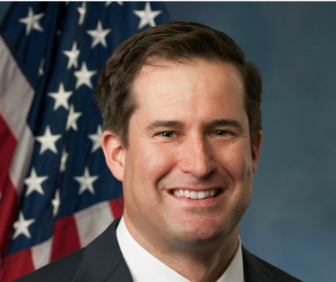 U.S. Rep. Seth Moulton has expanded efforts to reform at-sea monitoring for groundfishing vessels, corralling a regional and bipartisan group of federal legislators to urge NOAA to accept changes already approved by the New England Fisheries Management Council and supported by NOAA Regional Administrator John Bullard. Moulton and 16 other members of Congress — totaling 12 Democrats, four Republicans and one Independent from five New England states — wrote to NOAA Administrator Kathleen D. Sullivan expressing support for the council motions approved in December and again voicing their opposition to the National Oceanic and Atmospheric Administration’s plans to transfer at-sea monitoring (ASM) costs to permit holders sometime early this year. Read the article here 12:12
U.S. Rep. Seth Moulton has expanded efforts to reform at-sea monitoring for groundfishing vessels, corralling a regional and bipartisan group of federal legislators to urge NOAA to accept changes already approved by the New England Fisheries Management Council and supported by NOAA Regional Administrator John Bullard. Moulton and 16 other members of Congress — totaling 12 Democrats, four Republicans and one Independent from five New England states — wrote to NOAA Administrator Kathleen D. Sullivan expressing support for the council motions approved in December and again voicing their opposition to the National Oceanic and Atmospheric Administration’s plans to transfer at-sea monitoring (ASM) costs to permit holders sometime early this year. Read the article here 12:12
Update: Federal Funding for At-Sea Monitoring Likely to Extend into 2016
 We are pleased to announce an update on the status of federal funding for at-sea monitors in the New England Groundfish fishery. We have been informed that industry has facilitated an initial agreement among the three at-sea monitoring contract providers that may allow the remaining contract funds remaining to cover at-sea monitors after December 31 across the fleet, until those funds are expended, through sub-contracting arrangements. Read the notice here Why can they do this? Because they have ELIMINATED half the fleet over the past five years. 17:01
We are pleased to announce an update on the status of federal funding for at-sea monitors in the New England Groundfish fishery. We have been informed that industry has facilitated an initial agreement among the three at-sea monitoring contract providers that may allow the remaining contract funds remaining to cover at-sea monitors after December 31 across the fleet, until those funds are expended, through sub-contracting arrangements. Read the notice here Why can they do this? Because they have ELIMINATED half the fleet over the past five years. 17:01






